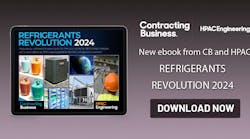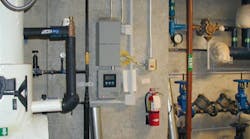On a campus of a major university in the Northwest, the chilled-water system was well-operated and maintained, but inefficient. The university was measuring the amount of chilled water it produced and distributed to more than 50 buildings, but it did not know how much water went to each building. The existing BTU meters were two decades old and no longer working properly.
In early 2000, accurate metering became a priority. The energy manager wanted to improve the efficiency of the central chilled-water plant and the buildings being served and have a clear understanding of the distribution of chilled water to the buildings. On a small scale, as the budget allowed, he installed insertion turbine meters and System-10 BTU meters from ONICON.
“I originally started installing the BTU meters in buildings where I had installed pressure-independent control valves,” the energy manager said. “I did a before-and-after comparison on the energy use in the buildings.”
Over the next four to five years, the energy manager installed new meters in approximately 16 buildings and began to understand how the overall system was working. Eventually, he determined metering the entire campus would be best to ensure system efficiency and accurate allocation.
In 2007, the university began the first of two energy-service projects. The first involved installation of pressure-independent control valves and determination of whether the BTU meters could be used for the final measurement and verification, which would help to justify the cost of additional meters. Because of plant conditions and accuracy requirements, the energy-service company suggested the university replace old turbine meters with ONICON insertion electromagnetic flow meters for flow measurement. The entire project took approximately 18 months.
“The straight run required upstream and downstream of the flow meters was difficult to achieve in some areas because of existing piping configurations—i.e., too many bends in close proximity,” the energy manager said. “In some cases, we had to move the meters into the adjoining utility tunnel to achieve adequate upstream and downstream straight run.”
The second energy-service project began in 2009.
With the meters, the energy-management team is able to see how the pressure-independent control valves are operating. Also, the team can determine whether the heat-recovery system is operating properly. With alarms based on settings the team created, a control technician can be scheduled to review system operation and make necessary adjustments, if something is off. These preventive-maintenance measures will ensure efficient system operation for many years to come.
For Design Solutions author guidelines, call Scott Arnold, executive editor, at 216-931-9980, or write to him at [email protected].










